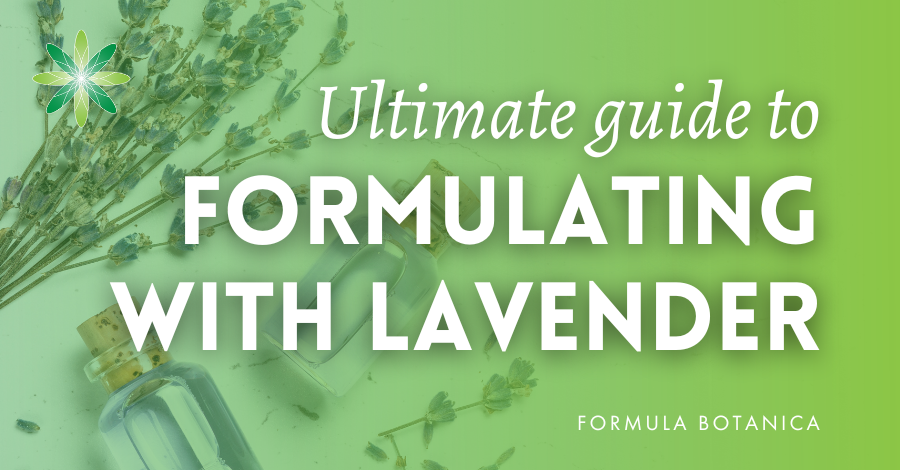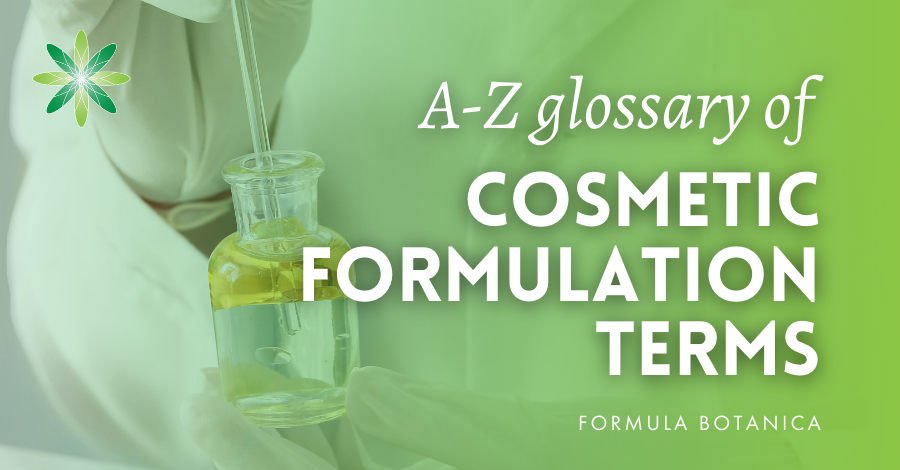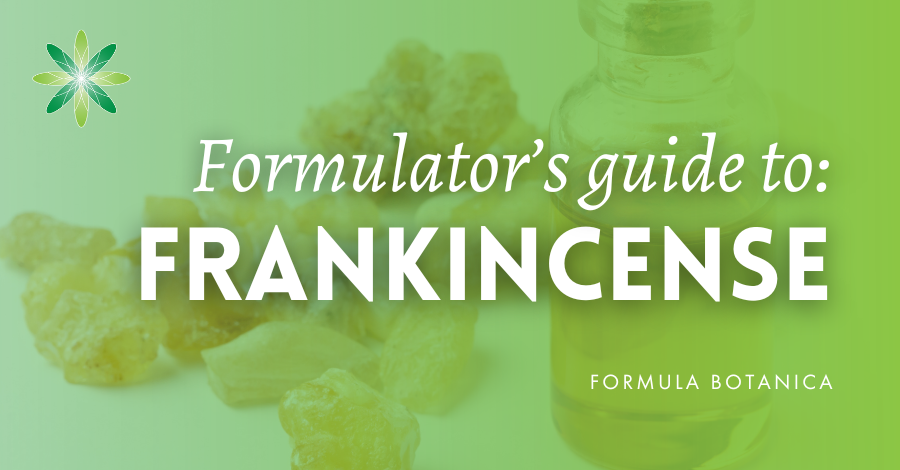AHA vs BHA skincare: do you know which liquid exfoliant is right for your skin or your formulations? If not, then you’re not alone. After all, it isn’t that long ago that acid chemical peel ingredients like Alpha-Hydroxy Acids (AHAs) and Beta-Hydroxy Acids (BHAs) exfoliants were used only by salon professionals who were trained in how to use them safely and effectively on clients.
Now though, AHAs and BHAs, along with their lesser-known relative Polyhydroxy Acids (PHAs), are commonplace in beauty counter skincare products from masks and scrubs to cleansers, toners and even cream moisturisers. That these acids are common is not surprising as they have been used in cosmetology and dermatology for well over 40 years (i).
What are Hydroxy Acids and why do we use them?
AHAs, BHAs and PHAs are widely used liquid exfoliants in skincare formulations targeting acne and designed to reduce the visible signs of ageing. In essence, they all work through exfoliation – desquamation – of the top layers of the epidermis, thereby speeding up skin cell renewal to resurface the skin. Among a range of outcomes, AHAs were found to promote softer, smoother skin, fade wrinkles, lighten age spots and decrease blemishes (i).
Beauty consumers these days have had to become familiar with acronyms for various high-performance and active cosmetic ingredients, but may not know what lies behind them, nor how certain enzymes and acids perform on the skin. As natural formulators, we need to dig deep into the science of these trending ingredients that have crossed over from salons to consumer beauty to ensure we add them to our formulations correctly, at the recommended safe usage level, and with clear purpose so we create desired outcomes from the use of our products.
Liquid acid exfoliants need to be respected and thoroughly understood as they are used in different concentrations – ranging from 2 to 70 per cent – depending on whether they are in beauty counter products or professional salon treatments or prescribed for use by dermatologists. Although hydroxy acids have a long history of use in professional settings, new research is being conducted to evaluate their effects on skin if used frequently and for prolonged periods as is the case with beauty products used in daily regimens.
In this guide, we take you on a brief tour of AHAs vs BHAs as well as mention their close relation PHAs. We cover the main differences, uses and safety precautions of these liquid exfoliants. Taken together, they form a topic we advise you to research further if intending to use them in your formulations. As we will see, these short acronyms hide powerful and effective ingredients.
6 things every formulator needs to know about AHAs
AHA, alpha-hydroxy acids, are natural, organic acids found in everyday foods like milk, apples, pineapples, grapes and sugar cane.
Once only used in professional salons at high percentages, AHAs are now found in everyday consumer cosmetics like cleansers and moisturisers at low levels of around 2 – 10%.
As liquid exfoliants, they resurface the skin encouraging cell renewal to improve in particular the appearance of both mature skin by “peeling back the years”, and acne-prone skin.
It’s best to avoid sun exposure and to use SPF products immediately after using AHA exfoliants as AHAs may make the skin susceptible to UV damage from the sun.
AHA ingredients work in an acidic pH range around 3.8. At higher pH levels they may lose effectiveness.
AHAs can work also, surprisingly, as humectant boosters which is why they are common in moisturisers too.
AHA vs BHA: what is the difference?
AHA stands for Alpha Hydroxy Acid and BHA for Beta Hydroxy Acid. These hydroxy acids are naturally occurring organic acids that accelerate the cell cycle through exfoliation. They can be derived from citric acid in citrus fruits, mandelic acid from the bitter almond, glycolic acid from sugar cane, sugar beets and pineapple extracts, malic acid from fruits such as apples, phytic acid from rice and tartaric acid from grapes, to name just a few sources.
Alpha Hydroxy Acids are water soluble, in contrast to BHAs which are oil soluble. AHAs are used in mitigating issues such as photo-damaged skin, rosacea, psoriasis, melasma, warts, hyperpigmentation and ichthyosis (thick, dry scaly skin). As several of these issues increase in mature skin, AHAs are common in anti-ageing skincare products. The promise of ‘peeling back the years’ has made AHA liquid exfoliants among the most popular high-performance, anti-ageing ingredients.
Glycolic acid and lactic acid (naturally occurring in milk) are two commonly used AHAs in cosmetic products. Of the two, glycolic is the more potent as has a smaller molecular size and can penetrate the epidermis further. This has its pros and cons as some people won’t be able to tolerate the power of glycolic acid. It is possible to feel some tingling sensations after using higher concentration glycolic acid AHA products, even if you don’t have sensitive skin.
At around 2 to 10 per cent, both glycolic and lactic acids are common in regular consumer beauty products such as moisturisers and cleansers. At concentrations up to 20 per cent, which is permissible in a professional salon treatment, they are used as chemical peel agents. We’ll talk further on about the usage levels, safety and need for sun avoidance and SPF application after using AHAs like these.
Beta hydroxy acids: a common example of a BHA is salicylic acid which is used to treat acne skin conditions (although AHAs may also be used in various acne treatments as well). BHAs are used to treat actinic patches (skin that develops rough, scaly patches from long-term UV exposure) and pigmented skin.
As you can see, BHAs have similar effects to AHAs, but with the significant advantage of providing anti-inflammatory properties. As lipid-soluble compounds, they are more suited to oilier skins and hence their use in acne skincare as they slough off the dead epidermal cells traveling through the skin’s sebum. They are best used at around 1-2 per cent concentration.
What about PHA or Polyhydroxy Acids?
Polyhydroxy acids (PHAs) are the lesser-known hydroxy acids. This is somewhat unfortunate as PHAs, while similar in function to AHA and BHA, are less harsh and irritating and therefore more suited to sensitive skin types. They are a good place for beauty consumers to start with a liquid acid exfoliant if they are unsure how their skin will react.
PHAs such as Gluconolactone, Galactose and Lactobionic all have a lactonic structure that is able to conceal the PHAs’ acidic nature and render them suitable for sensitive, dry and/or rosacea-prone skin.
Some PHAs exhibit antioxidant activity as they have the ability to chelate metal. This, however, does not mean they can be used solely as a chelator in any formula. What makes PHAs special is their ability to deliver anti-ageing efficacy similar to that of AHAs but without increasing the skin’s vulnerability to ultraviolet (UV) radiation.
Formulating with AHA and BHA exfoliants
Alpha Hydroxy Acids function best at a low pH in any type of application. The lowest pH recommended is 3.8 for creams, lotions, serums and masques. Depending on an AHA’s usage, the range of pH can vary between 3.8 – 4.4 but this is just an indication and you need to check with your supplier for precise concentration levels and the optimal pH range. As the pH level rises in any application, the AHA ingredient’s efficacy in the formula will decrease and might be deactivated.
Alpha Hydroxy Acids do not like heat and they are best added either in the cool-down phase in hot-process manufacturing or room temperature in the case of cold-process methods.
AHA as Humectants
Contrary to expectations, AHAs and PHAs have considerable humectant properties which is why many cosmetic brands include them in moisturisers. Remember, that AHAs work best at low pH levels in order to facilitate cell renewal. At a slightly higher pH of about 4.5 – 5, while not necessarily losing all their efficacy as skin resurfacers, they tend to serve better in cosmetic applications as hydration boosters.
Safety considerations in formulating with AHA
Maximum recommended percentages
Regardless of the type of AHA, whether it is a standalone AHA or a cocktail of fruit acids, there is a prescribed limit that can be incorporated into a formula. Following the FDA guidelines, for any cosmetic product that is sold over the counter or readily available for purchase without a prescription, the maximum AHA content is 10% in a formula or product.
Skin specialists and dermatologists are allowed to prescribe the use of AHA products above 10%, with close monitoring and usually for short term use only. Higher concentrations of AHAs can cause skin irritation and sensitisation. Licensed professionals would be able to balance the usage to only as much as needed. At higher hydroxy acid percentages, products require approval in the USA, for example, under pharmaceutical regulations, and similar regulations exist in other jurisdictions.
Another formulation consideration is the frequency with which alpha hydroxy acid products are used. They can be formulated for regular use which would be classed as daily use or for use at regular intervals, or as short-term use. Directions on the frequency and duration of use of an AHA/BHA product depend on what the product aims to achieve.
How to research your formulation
You will need to do in-depth research to determine the optimal, safe and regulated levels of hydroxy acids in your formulation. This will help you write your marketing information as well as ensure you write clear directions on your product’s use along with any cautions and precautions consumers need to know. Your product safety assessor will be able to advise you on this.
Again, looking at the US as an example, products that contain AHA or BHA ingredients with the intention of exfoliation and cell renewal must contain clear indications on the label of their usage according to FDA regulations. Do check your country’s regulations and note also that AHA/BHA cosmetics can render the skin vulnerable to damage from UV rays.
While there is limited, definitive research on photo sensitisation through the use of hydroxy acids – mainly on account of the variety and incompatibility of research methodologies used – several studies suggest that AHAs can increase the sensitivity of skin to ultraviolet (UV) light (ii).
The Cosmetic Ingredient Review (CIR) conducted an independent assessment of the safety of AHAs. In its conclusions, it recommended that cosmetics containing AHA ingredients be formulated so as “to avoid increasing sun sensitivity or to provide directions for use that include the daily use of sun protection (an SPF product)”.
We hope this post has clarified the use of AHAs vs BHAs in skincare. To help you explore their safe use further and feel confident including them in your natural formulations, we encourage you to do further research. The suggested reading below is a good place to start.
References and further reading
(i) Hydroxy Acids, the Most Widely Used Anti-aging Agents (Jundishapur Journal of Natural Pharmaceutical Products, 04 Jan 2012, 7(1):9-10)
(ii) Topical glycolic acid enhances photodamage by ultraviolet light (Photodermatol Photoimmunol Photomed. 2003 Feb;19(1):21-7. doi: 10.1034/j.1600-0781.2003.00013.x.)
Applications of hydroxy acids: classification, mechanisms and photoactivity (Clin Cosmet Investig Dermatol. 2010; 3: 135–142.)
Alpha-hydroxy acids in the treatment of the signs of photoaging (Science Direct / Elsevier).
Safety Assessment of Alpha Hydroxy Acids as Used in Cosmetics (Cosmetic Ingredient Review CIR, 2013).
Cosmetics Info: Alph Hydroxy Acids.
FDA Cosmetic Ingredients: Alpha hydroxy acids guidance and information
FAQs
What is AHA skincare?
Alpha hydroxy acids, AHA, are a group of cosmetic ingredients known as liquid acid exfoliants that are typically used as chemical peel agents. They work by exfoliating the top epidermal layer of skin cells to leave skin looking fresher, firmer and more radiant. In the process, they have the effect of reducing the visible signs of issues like fine lines and hyperpigmentation and may be used on acne-prone skin too. Common AHAs are derived from citric acid in fruit, glycolic acid from sugar cane as well as lactic acid, which is present in milk. AHA skincare includes facial peels, exfoliants, scrubs and cleansers where the AHA ingredient can be present from around 2 to 10 per cent which is the highest, FDA-permitted amount in consumer cosmetics. Professional salons may use treatments with AHA concentrations up to 20 per cent.
AHA vs BHA skincare: what’s the difference?
AHA and BHA are both classed as liquid exfoliants and are used for a variety of skin issues including mitigating the appearance of fine lines, dark spots and acne, and can be included in moisturisers and other cosmetics for their humectant properties. The main difference between them is that AHAs are water-soluble molecules while BHAs are lipophilic, or oil loving. This means that they exfoliate and/or cleanse differently and which is why they are sometimes found together in cosmetics to offer dual cleansing and exfoliating potential. Another difference is that BHAs are anti-inflammatory and considered less harsh that AHAs in skincare.
What does BHA do for skin?
Beta hydroxy acids, BHA, are acids commonly found in skincare aimed at oily or even acne-prone skin and used also to reduce hard, scaly patches of skin. They are considered anti-inflammatory and less harsh than AHA liquid exfoliants. Salicylic acid is a BHA common in acne skincare and as such it is often confused with the whole category of BHAs, though of course other compounds and molecules have BHA functions as well.
Where can I learn to formulate natural skincare and haircare?
Join us at Formula Botanica, where tens of thousands of students and followers take our free and paid online courses to learn how to formulate organic skincare and haircare for themselves or to sell and also how to set up a beauty brand and business.
Leave us a comment

Eliza is a Formulator as well as a Grading Tutor at Formula Botanica, where she helps our students to become better organic cosmetic formulators. Read more about the Formula Botanica Team.


























